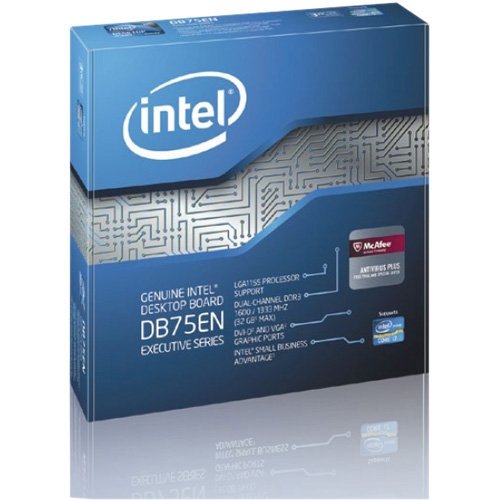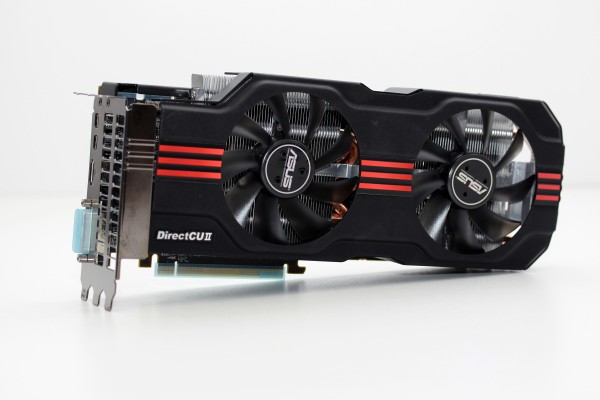Midrange System Buyer's Guide
by Zach Throckmorton on September 11, 2012 12:35 AM EST- Posted in
- Guides
- AMD
- Intel
- Ivy Bridge
- Radeon HD 7000
- NVIDIA
Developments in the Midrange Market
As with the budget segment of the DIY computer market, the midrange segment has seen many exciting new developments since the start of 2012. Perhaps the most noteworthy change is that Intel CPUs are now entirely dominant in systems that will set you back about $1,000. Ivy Bridge-based chips are now available at every price point from $100 up, leaving only the pure budget category untouched (at least until we see the Celeron IVB part). If you're interested in more information, we have a lot of information available on Ivy Bridge.
As with the latest CPUs, the newer B75 chipset has brought out of the box Ivy Bridge CPU support to less expensive motherboards, filling out the Panther Point platform. Ian thoroughly covered the Z77 chipset and compared it with H77. The B75 chipset is similar to Z77 and H77 with a few important differences for midrange buyers: two fewer USB 2.0 ports (eight vs. ten), one less SATA III port (one vs. two), and support for neither Intel RST (firmware RAID) nor SRT (SSD caching). PCIe 3.0 and 2.0 configurations are the same on B75 as they are on H77. The important point is that B75 enables less expensive motherboards that lack features that might not be important to midrange system builders, allowing money to spent on faster CPUs, GPUs, better SSDs, etc.

That said, AMD's impending launch of its Trinity APUs might very well put AMD back into the midrange market. AnandTech will be covering Trinity chips in more depth as the new APUs start hitting the mainstream desktop market over the next few months. While the parts are already shipping in OEM desktops, retail availability of the APUs has not yet occurred. For now, you can read more our current Trinity coverage.
As is often the case, the GPU market remains dynamic, with both AMD and NVIDIA wrestling for your money at multiple price points by introducing new cards and lowering prices on existing cards. We'll discuss the GPU market in more depth on the gaming rigs page.
Another development of note for midrange buyers is that prices on many of the best SSDs have been cut in half (or more!) compared to late 2011. This means that respectably-sized (i.e. 120/128GB and above) SSDs that perform very well and have great reputations for reliability are now comfortably within reach of even the lower end of the midrange budget. High capacity SSDs (i.e. those around 250GB) are also within midrange budgets; for many purposes, this means you can eschew a mechanical hard drive entirely—and either spend that money on better CPUs, GPUs, or just keep it in your wallet. Fortunately for consumers, prices on mechanical hard drives are declining in the wake of the Thailand floods, so the wallets of those with more demanding storage needs won't be hurting quite as badly as they were earlier in 2012.
Finally, case manufacturers have released many compelling choices for midrange system builders. Over the next few pages, we'll highlight new enclosures from Fractal Design, Corsair, Lian Li, NZXT, and others.
With that out of the way, let's get to the builds! We'll start with gaming machines on the next page.











95 Comments
View All Comments
Tech-Curious - Thursday, November 1, 2012 - link
I just stumbled over this article. I laugh because I just got finished ordering parts for a new build that's almost identical to the low-range build in the guide -- but I spent a couple of weeks doing research and/or looking for deals to get there.Wish I'd seen this sooner!
Of course, the tech market is a fickle and cruel mistress: Just two days after I ordered an Intel 330 240GB SSD, I get an email from newegg advertising a massive sale on SSDs. :)
Anyway, I've loved this site for a solid decade. Thanks, and keep up the great work.
LameKuma - Tuesday, November 20, 2012 - link
Can't wait to see what the crew has in store for the Holiday Guides and what they recommend. :)mrw55 - Thursday, November 22, 2012 - link
I found this post after searching for mid-range workstations and couldn't help but throw my 2 cents in,In a previous life; As the former Q.C. tech for the electronics dept. of a company in RTP, I can verify that every manufacturer has defective components/parts.
One can generalize about quality and product intent but sooner or later, regardless of the company, someone is going to have a problem with company X,Y or Z.
All this talk of good product/bad product means one thing to me. What happens after the sale.
Even then it depends on who one talks to come problem time.
Talking to a computer tech recently about motherboards, his company only uses ASUS products as they find ASUS has the best overall performance and support.
Five minutes from now I'll talk to someone else and will be told "Oh god, not ASUS, their products suck" .
Long story short, it all comes down to personal experience and everyone can back up what they say. Problem is, some people are better at statistics than others.
Meaning, the fact that one can only present 1 or 2 example of failure, proves the quality of a product.
Argue away, nothing will ever be settled.
Tech-Curious - Tuesday, December 4, 2012 - link
Your general point is a good one; human beings aren't wired to track statistical trends accurately. We're prone to place too much emphasis on anecdotal experience.So as consumers, we shouldn't put too much stock in negative user reviews, but we also can't ignore reliability entirely. Sites like the following provide good info for prospective buyers of computer hardware, for example:
http://www.behardware.com/articles/881-1/component...
Of particular interest on that site are the listings of specific parts with unusually high return rates. For instance, the OCZ Octane 128 GB SATA II has a reported return rate of 30.85%. It might be fair to defend the OCZ brand on the basis of its ~5% total return rate, but even the most ardent OCZ fanboy ought to avoid the Octane 128GB.
By the same token, OCZ's 5.02% return rate on SSDs doesn't sound all that terrible in isolation, but it's still more than ten times higher than the reported return rate for Intel and Samsung SSDs. Of course, there's still a chance you'll end up with a dud if you order an Intel or a Samsung, but your odds are far better.
pbbob - Saturday, October 12, 2013 - link
I always consult these system buyer's guides before building a new system and this Thanksgiving is my target completion date.Any idea when the 2013 version of this guide will come out?